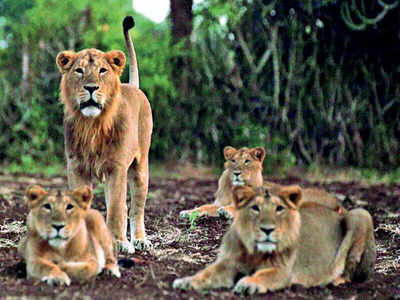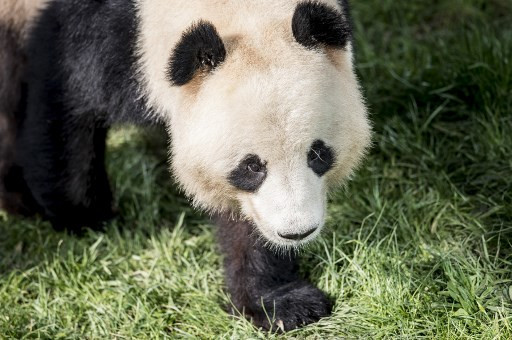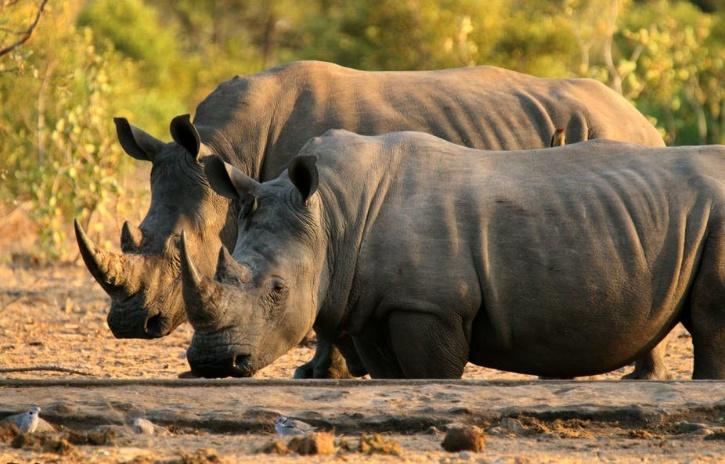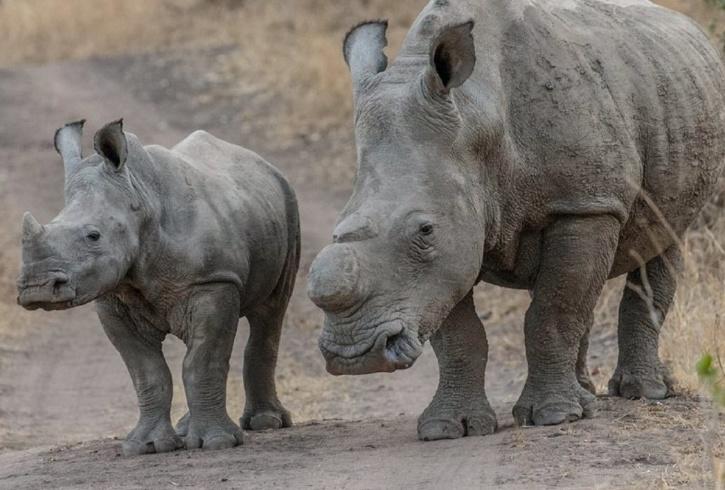 |
| Does this lion appear to be choking on a radio collar? |
It has been recently reported that in the past one year, one out of four radio-collared Asiatic lions have died raising concerns as radio-collaring is done on young animals. Some experts claim that the unscientific use of collars could have led to the lions' deaths. Chief Conservator of Forests Dushyant Vasavada sent a letter to the deputy forest officials, imploring them to take essential action wherever they received objections regarding radio-collaring of lions in their area. The Gujarat State Forest Department has received 75 radio collars. So far, 89 lions have been collared to track their movement. This indicates that about 14 radio-collared lions may have died spurring the authorities to use their collars on other animals. Messages and pictures heightening concern over radio-collaring of lions have been distributed in social media. However, Vasavada stated that lions dying because of radio collars are baseless and that there are other reasons behind their deaths. When asked about the letter sent to deputy forest officials, he responded that it was only a precautionary measure.
 |
| Teak trees in Gir Forest |
Wildlife experts working in Gir Forest that the number of dead radio-collared lions could be higher. H.S Singh, a member of India's National Board of Wildlife and lion expert, stated that it was not necessary to radio-collar such a large number of lions as it could lead to serious behavioral changes. Therefore, he recommended that radio-collaring should be limited to twelve lions. Retired Indian Forest Service (IFS) officer A.K Sharma, who was awarded a Kirti Chakra for rescuing lions from poachers in 1989, stated that that the animals should not be treated like guinea pigs. He further stressed that radio collars cause pressure on the lions' necks hindering their hunting skills and that the practice is being done just to make it easy for forest officials in tracking lions, rather than for any research purpose. In addition to the discomfort caused by radio collars, two wildlife experts stated that collaring young lions, particularly males, appears to be proving fatal. This is due to the lions' manes growing quite fast and that their head size increases for a few years. Because of this, many forest officials in Gir Forest have started to remove the collars if they find the lions facing any discomfort. Sources said that the state forest department did not consult experts before radio collaring such a large lion population. A researcher with the Wildlife Institute of India (WII) suggested that radio-collaring should only be done on one lioness from each pride and that the total number of radio-collared individuals should not be more than 10. However, this was not the case since many lions and lionesses from the same pride had been selected in many cases.
 |
| A lion family in Gir Forest |
It looks to me that the conservation of the Asiatic lion needs some serious improvement and several fingers are pointed at the practice of radio-collaring the lions. Lions that had been found dead wearing radio collars were suspected of dying of discomfort caused by the collars. But was their cause of death solely attributed to radio collars? Chief Conservator of Forests Dushyant Vasavada disputed that claim calling it baseless and stated that the lions died of other causes. Other experts are saying that the practice is attributed to the radio collars with young lions being susceptible to grievous injuries while growing up with collars on. In 2018, a radio-collared tiger was found dead in Odisha after succumbing to an infection in its neck. However, the news did not confirm whether the infection was caused by the collar itself or something else. I would suggest that any lion found dead with a radio collar on should be thoroughly examined in order to determine whether the cause of death was by the collar or something else. I also strongly believe that tracking lions and other wild animals for research purpose requires considerable consultation from experts. This includes learning about different sizes of radio collars, the proper number of animals to fit with collars in order to track them, and other modes of tagging such as microchips. I think microchips would be a good alternative to tagging young lions, but it would be best to consult the experts and receive guidance from them. Collaboration between state forest departments and wildlife experts is essential for the conservation of lions and other animals.














).jpg/1280px-Flickr_-_law_keven_-_Feeling_Ruff...HBWE_Everybody..-O)).jpg)

